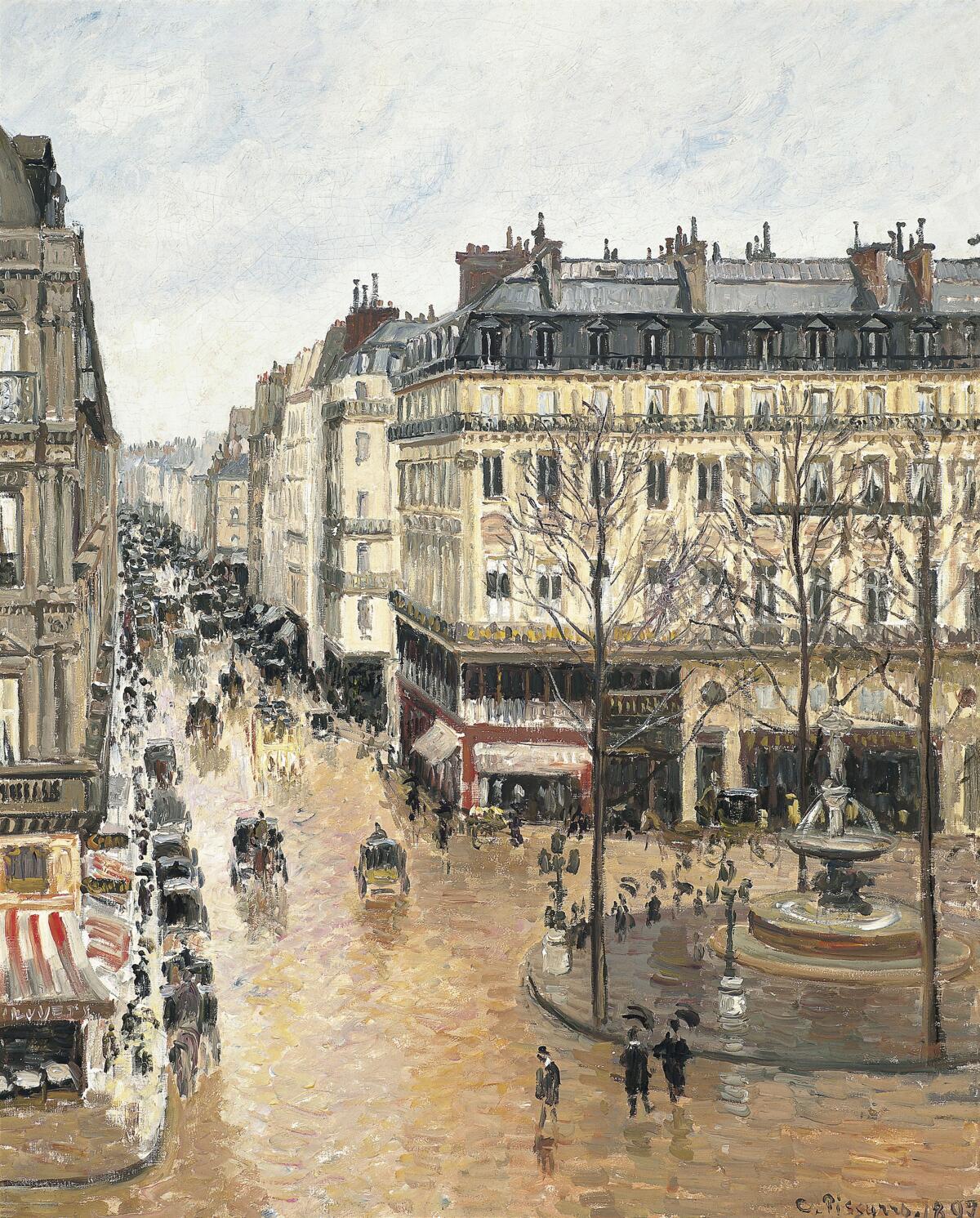Supreme Court hears Californians’ claim to painting taken by Nazis, sold to museum

WASHINGTON — The Supreme Court on Tuesday heard a last-chance appeal from a Jewish family in California seeking to recover an Impressionist masterpiece that was seized by the Nazis in 1939 and has been on display in a Spanish museum since 1993.
At issue now after years of litigation, most of it in a Los Angeles court, is whether the dispute should be resolved under the law of California, where the family sued, or the law of Spain, where the painting was sold and displayed.
Under California law, “thieves cannot pass good title to anyone, including a good faith purchaser,” lawyers for David Cassirer and the Jewish Federation of San Diego County said in their appeal.
During Tuesday’s arguments, several justices said they agreed that a suit like this, filed in California, should be decided under California law.
“Welcome to the United States. That’s how our courts work,” said Chief Justice John G. Roberts Jr.
Last year, however, the U.S. 9th Circuit Court of Appeals agreed with a federal judge in Los Angeles that the painting of a Paris street scene by Camille Pissarro should remain with the Thyssen-Bornemisza Collection at a state-owned museum in Madrid. The judges did so by applying Spanish law.
The painting had been brought to the U.S. illegally after the war, and it was sold by a Beverly Hills gallery in 1951. The Stephen Hahn Gallery in New York arranged for its sale in 1976 to Baron Hans Heinrich von Thyssen-Bornemisza, a Swiss art collector and the heir to a German steel empire. In 1993, he sold his collection of more than 775 paintings for $340 million to Spain, where they would be exhibited at a new museum in Madrid. The art works were displayed publicly for more than six years, a key issue under Spanish law.
But all the while, Claude Cassirer had been searching for the lost painting that hung on the wall of his grandmother Lilly’s apartment in Berlin. She turned over the painting to a Nazi official in 1939 to obtain a visa out of Germany. Separately, her grandson escaped to Britain and then to Cleveland after the war.
When Lilly Cassirer died, she left the rights to the painting to Claude. In a house outside San Diego, where Claude and his wife had retired, the couple kept a copy of the lost Pissarro on the wall.
Then, in 2000, Cassirer received a phone call from an old acquaintance: The painting had been found. “I was in shock,” he told The Times in 2010.
After being rebuffed by the Spanish government, he filed suit in 2005 in a federal court in Los Angeles seeking to recover the painting, now valued at $30 million.
The state-owned museum sought to have the suit thrown out based on the Foreign Sovereign Immunities Act of 1976, which usually protects foreign governments from being sued. But the museum lost in the first round of litigation because the law has an “expropriation exception” for property confiscated in violation of international law.
In the next phase, U.S. District Judge John Walter applied Spanish law and said the museum had openly purchased the paintings and put them them on display in public.
While the baron had “reasons for suspicion” that the painting may have been stolen and the museum “may have been irresponsible” in failing to investigate its history, Walter said neither had “actual knowledge” that the painting had been essentially stolen by the Nazis.
The judge’s ruling, affirmed by the 9th Circuit Court, would have ended the case, but for the Supreme Court’s intervention in September.
If the justices reverse the 9th Circuit Court, which appeared likely during the argument, the case will go back to a judge in Los Angeles, with the outcome still uncertain.
It may be several months before the court hands down a decision in Cassirer vs. Thyssen-Bornemisz Collection Foundation.
More to Read
Get the L.A. Times Politics newsletter
Deeply reported insights into legislation, politics and policy from Sacramento, Washington and beyond. In your inbox three times per week.
You may occasionally receive promotional content from the Los Angeles Times.










